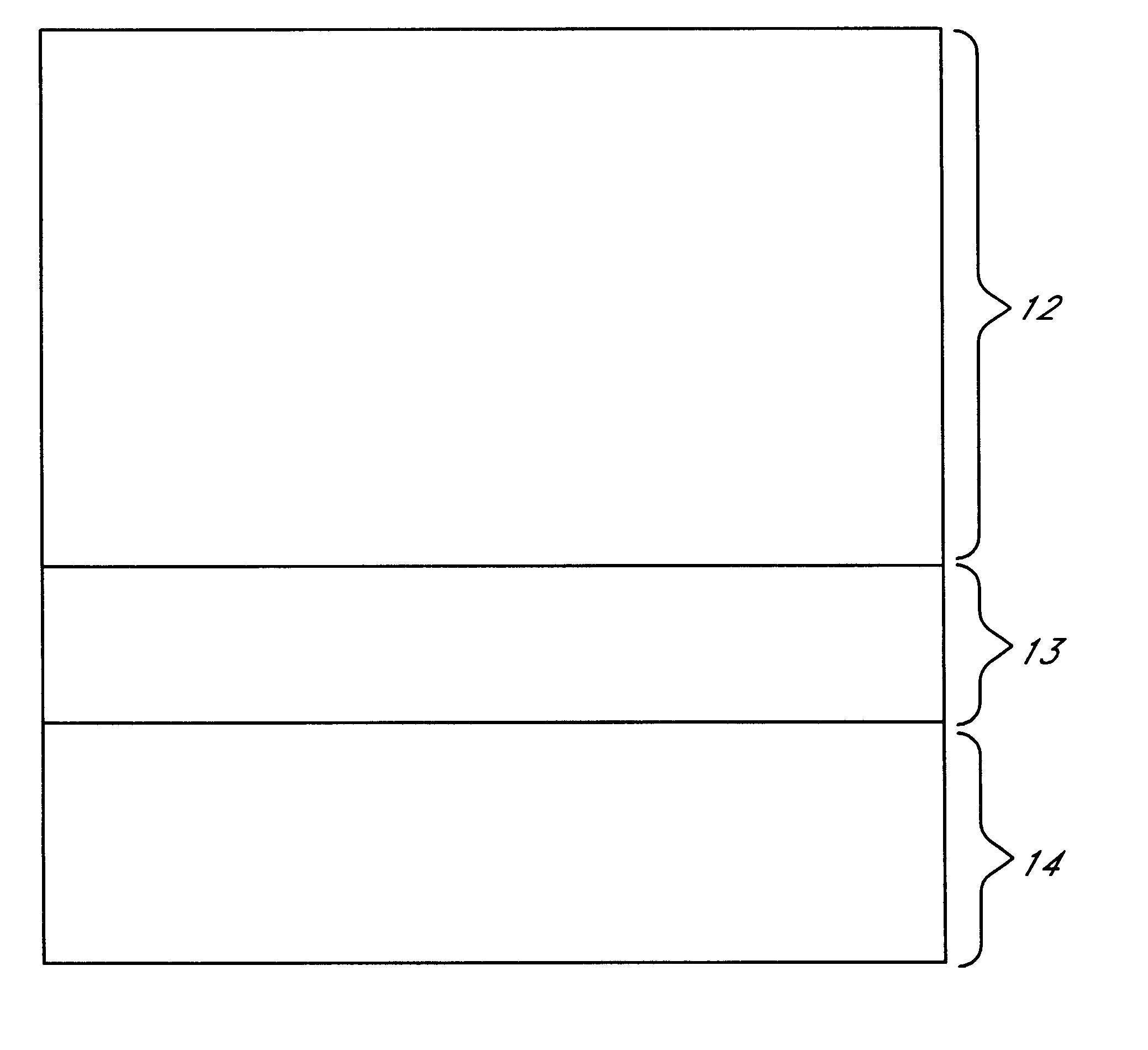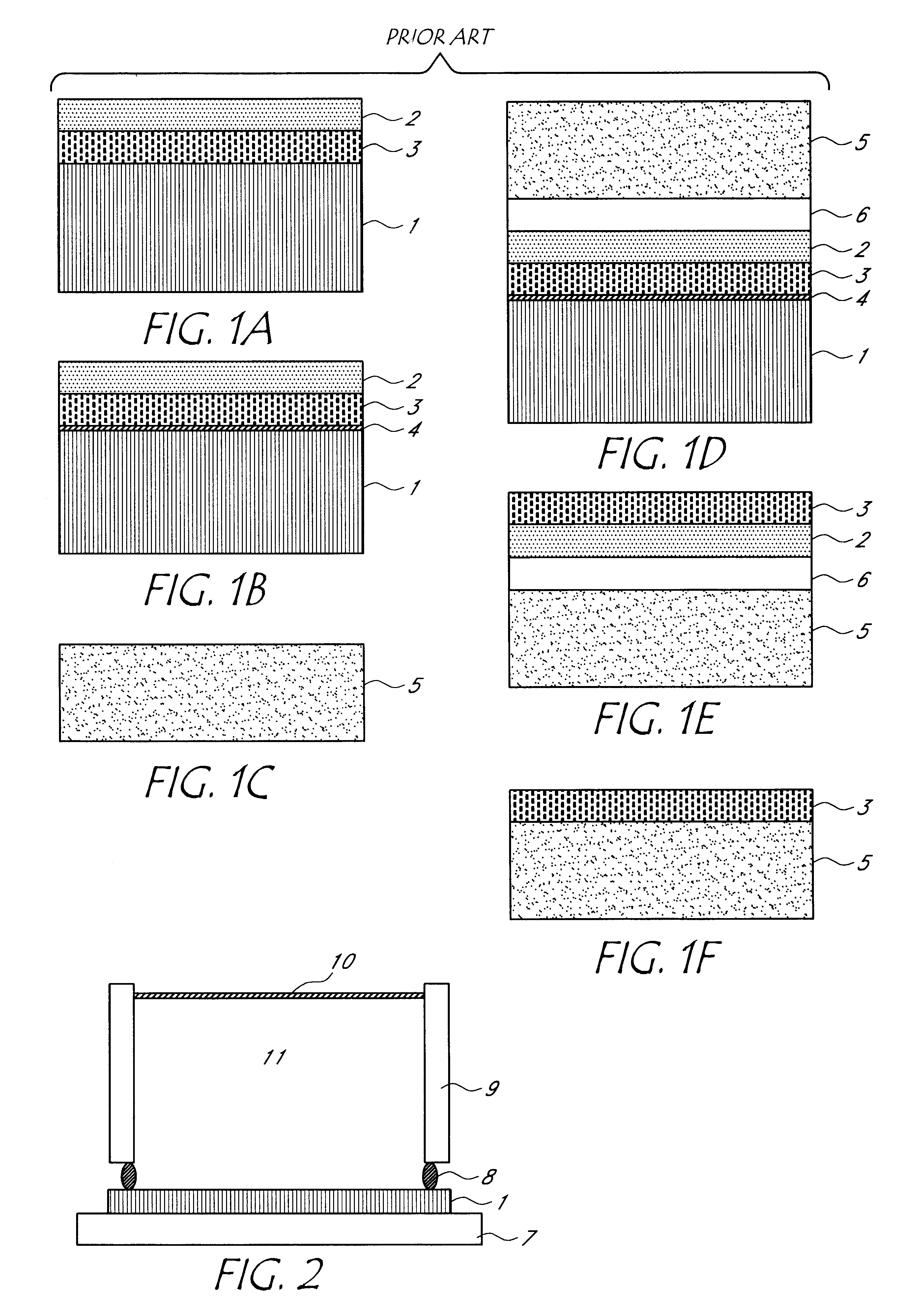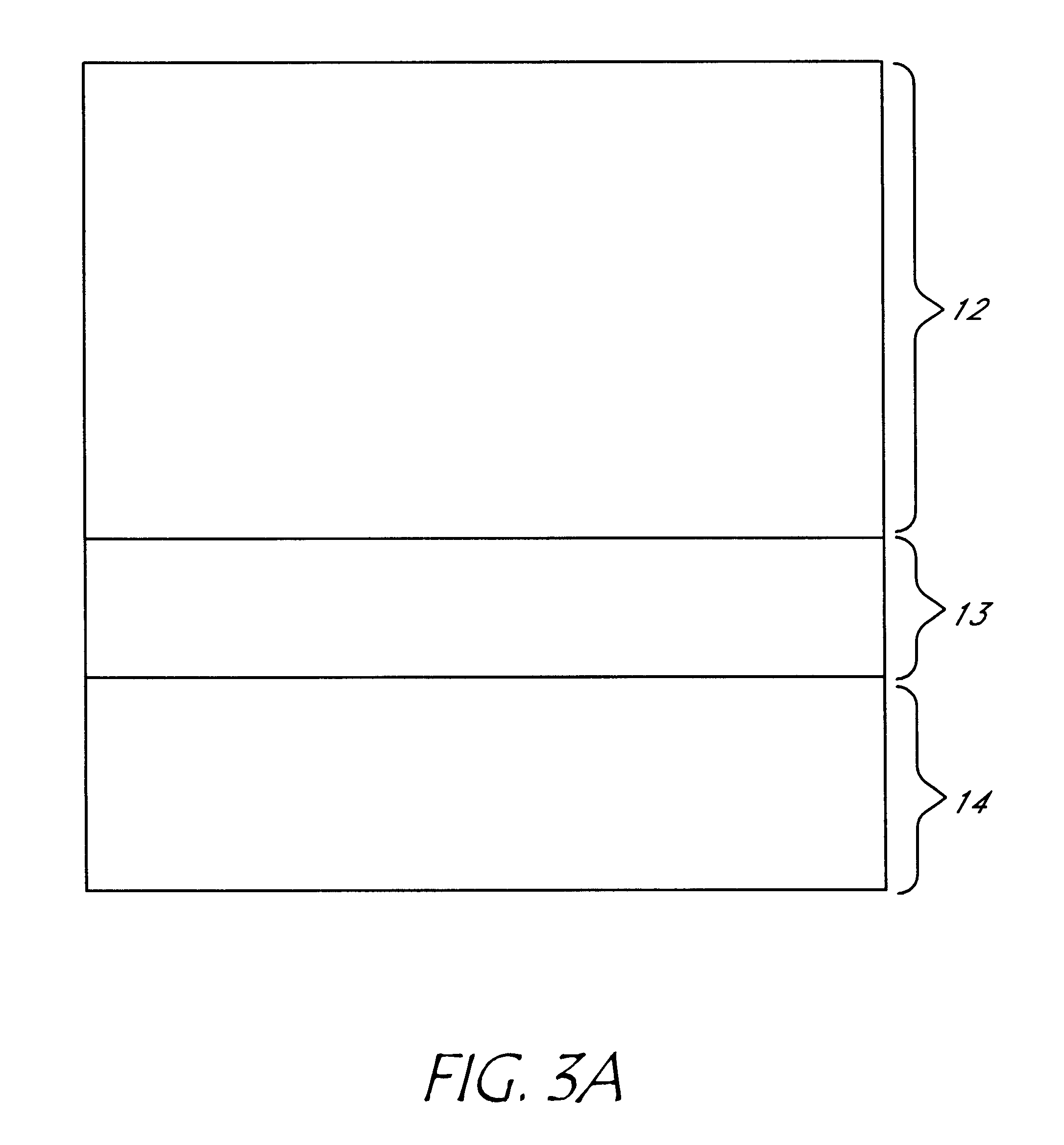Method for the formation and lift-off of porous silicon layers
a technology of porous silicon and lift-off layer, which is applied in the direction of basic electric elements, electrical apparatus, semiconductor devices, etc., can solve the problems of high mechanical strength of separation layer, high cost of soi structure or solar cell, and high cost of soi structur
- Summary
- Abstract
- Description
- Claims
- Application Information
AI Technical Summary
Benefits of technology
Problems solved by technology
Method used
Image
Examples
example 2
Experiments were carried out with a mixture of HF, acetic acid and deionised water in which the concentration of HF varies between the different experiments from 10% to 40% and current density varies from 25 mA / cm.sup.2 to 200 mA / cm.sup.2. The acetic acid is used as a wetting agent, and provides enough functionality to obtain a good pore distribution. Ethanol could also be used, but for environmental reasons acetic acid is preferred. For a given current density and for a given HF concentration, formation of the separation layer or a very high porosity layer or a detached layer as shown in FIG. 3A is obtained when the reaction is continued after a certain time. The low porosity layer 12, high porosity (separation) layer 13 just before lift-off and silicon wafer substrate 14 are visible on FIG. 3A. For a 25% HF solution and for 150 MA / cm.sup.2 current density this time is around 45-55 second and the thickness of the thin layer obtained is around 7 to 10 microns. Different layer thickn...
example 3
Electrochemical etching of silicon occurs at the HF solution / silicon interface when subjected to the flow of current. When a hole coming from the bulk silicon reaches to the interface, the Si--H bonds is replaced by Si--F bond due to an attack by a fluoride ion from the HF solution. The polarization induced by these Si--F bond lowers the electron density of the Si--Si bond and these are broken too. Silicon dissolves as tetravalent silicon fluoride (SiF.sub.4), which reacts with HF and produces fluorosilicic acid (H.sub.2 SiF.sub.6). This electrochemical reaction is limited to the holes and results in pore formation. FIG. 4 illustrates the interface between bulk silicon and the HF solution where pore formation occurs. The numeral 15 indicates bulk silicon, 16 is the HF solution, 17 designates the holes, 18 are the fluoride ions and 19 is the interface.
Once the pore formation starts at a certain position, it goes straight down in silicon as shown in FIGS. 5A through 5D. The numeral 21...
example 4
For the case of 25% HF solution and 150 mA / cm.sup.2 current density the separation of the PSL occurs at around 45-55 seconds. Because of the high current density, reaction occurs very fast. The centre portion of the layer gets detached with the wafer but the periphery remains attached with the silicon because of the construction of the experimental set-up. Therefore after the formation of separation layer if the reaction is allowed to continue, the by-product, hydrogen, gathers underneath the layer and exerts pressure on the film. The film breaks because of this pressure. Therefore, exact control of the reaction is required.
In another approach, which comprises two steps, one can exploit the use of electro-polishing together with the electrochemical etching for the formation of separation layer. For the purpose of this invention, polishing shall be understood as etching a rough surface such that the uneven topography of the surface decreases. Electrochemical etching is carried out wi...
PUM
| Property | Measurement | Unit |
|---|---|---|
| current density | aaaaa | aaaaa |
| thickness | aaaaa | aaaaa |
| current density | aaaaa | aaaaa |
Abstract
Description
Claims
Application Information
 Login to View More
Login to View More - R&D
- Intellectual Property
- Life Sciences
- Materials
- Tech Scout
- Unparalleled Data Quality
- Higher Quality Content
- 60% Fewer Hallucinations
Browse by: Latest US Patents, China's latest patents, Technical Efficacy Thesaurus, Application Domain, Technology Topic, Popular Technical Reports.
© 2025 PatSnap. All rights reserved.Legal|Privacy policy|Modern Slavery Act Transparency Statement|Sitemap|About US| Contact US: help@patsnap.com



